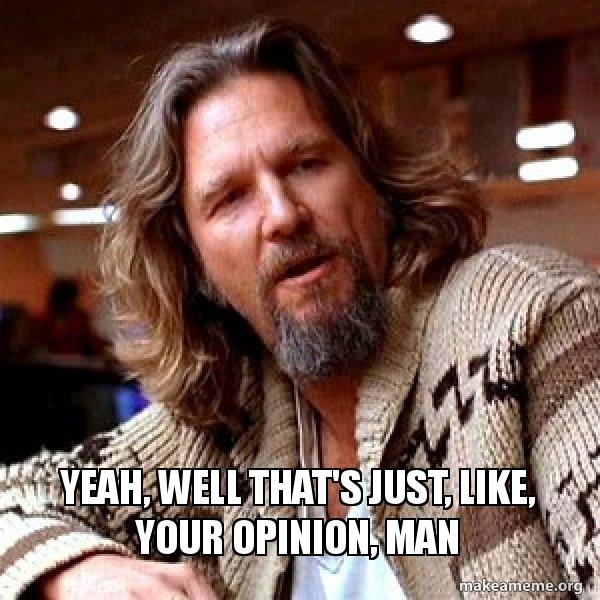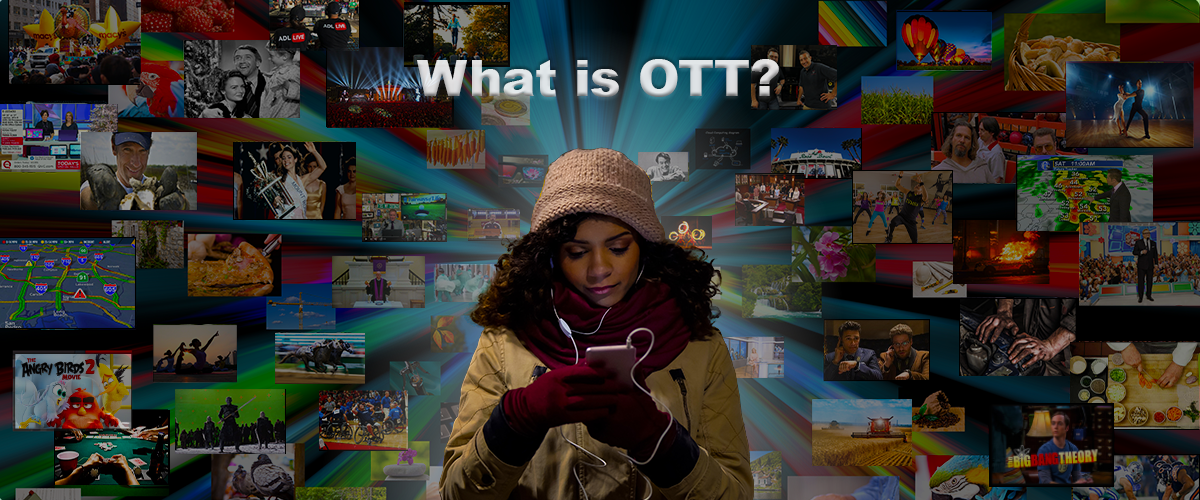
by John Basile
Are YOU Down With OTT?
Several years ago, I remember having a discussion with someone about the legitimacy of web streaming and how people would “cut the cable” and discover all of the wonderment of internet-based content and programming. Mind you, this discussion took place at a time when YouTube was then recently acquired by Google, MySpace was making Tom an internet hero, and The Pirate Bay was the “go to” source for videos and music—not that I EVER took advantage of that at all—It was at a time when people were starting to discover the real power of the internet.

“Like them or hate them, these devices revolutionized the way we would forever consume content and now put the power of the internet in our pockets.”
In 2007, the ability to consume internet-based content really took hold with the release of the original iPhone. Like them or hate them, these devices revolutionized the way we would forever consume content and now put the power of the internet in our pockets. 2007 also saw the birth of two companies that also would make it easier for people to share live events with the world. 1) Mogulus, which later became Livestream, and now is owned by Vimeo; and UStream. Another well-known company also launched their streaming platform the same year as well: Netflix.
91 million subscribers will utilize live streaming by 2024
The Ultimate Guide to Live Streaming Events – Vimeo
Jump ahead 15 years, and according to Vimeo’s Ultimate Guide to Live Streaming Events, “The global live streaming market is on pace to hit $247 billion dollars by 2027,” and that “…91 million subscribers will utilize live streaming by 2024.” These numbers alone are very impressive, but they are also very important as it shows the viability and profitability of streaming media and content. This is why the OTT buzzword is rapidly making its way from the control room into the boardroom where media and marketing executives are seeking ways to leverage this technology.
What?

So what exactly is OTT? OTT is an acronym for “Over The Top” media and directly refers to the way it is directly delivered to the viewer or user (aka via the internet through an app or browser). Although very similar to viewing live streams or videos uploaded by producers to YouTube (in theory), OTT differs slightly as it generally refers to the delivery of premium content. This usually means that a proprietary app and subscription-based service is required for consumption. The most common examples of OTT services are Netflix, Hulu, Pluto TV, etc. as they offer more than just a video or a live stream.
Why?
With a predicted compounded annual growth rate (CAGR) of around 18.7% by 2026, OTT programming is not just growing—it is dominating the way we consume content. This is why we have been seeing content shifting from larger platforms (like Netflix or Amazon) to smaller, more focused platforms like Disney+, Paramount+ or HBO Max, to name a few. These larger networks see the value OTT can bring to the viewer with an enhanced viewing experience (like actor bios, additional footage, etc.) as well as the associated profits that go along with a proprietary subscription service.
Getting started with offering OTT content isn’t terribly complicated, but it does require some sound planning. When helping clients decide if an OTT solution/workflow (what’s a workflow anyway?) is right for them, we usually ask them to state their goals and rationale for providing this type of platform to their viewers. For instance, if a client wants to provide a genuine “second screen” experience where additional content (like live social media interaction) is shared simultaneously with the “first screen” (or main program), then that might dictate what is shared and how.
Since OTT was intended to bring a premium and feature-rich experience for the viewer, offering exclusive content is important in achieving success. If the OTT content is simply a mirror of what is being shown as a primary broadcast (like a simulcast of a TV broadcast), then traditional live streaming via an established platform (like Rumble or YouTube) might be more ideal and cost-effective. The content you want your viewing audience to consume is paramount to the entire OTT experience.
How?
Once the why and what are determined, we now have to investigate the almighty how. In the case of many large, online-based, subscription services, a proprietary app is required to access this exclusive content. User experience (UE) is pivotal to the success of an OTT platform, so an app or web developer will need to enter the conversation. Their goal is to ensure that the UE not only matches, but is even technically possible to recreate the vision of the content producers.
Where?
While developers lay out their designs and figure out how everything needs to feel for the user, where content is housed and accessed is a vital piece of the puzzle. Cloud-based media servers act as the bridge and host for getting your content to your users. There are many companies out there who can create and “spin up” a media server on AWS or other cloud hosting platform of your choice. This is the delivery part of the workflow to ensure your exclusive content can be accessed by your app or website. Think of the app or website as nothing more than a portal to access the good stuff.

So, how does content get to “the cloud”? Traditionally, an FTP application would allow for the upload of media to be placed into these servers, but that only works for pre-produced content in file form. What about sharing a live stream or feed from a remote station or in the field? This is where an encoder plays an important role as it is a necessity for creating a live stream of content to be shared with the cloud-based media servers which then deliver the content to the app or website.

In the case of many of our OTT workflow clients, we often find that they need something more than their traditional broadcast equipment. Depending on the experience they are trying to create for their OTT audience, usually the most popular and versatile solution selected is The Dude Rack. Although The Dude Rack is an all-in-one, complete broadcast solution by itself, due to the versatility of the onboard vMix software, and the way the systems are built, this rack-mounted solution can become the all-important “link” between traditional broadcast programming and feature-rich OTT content.
“…we often find that they [clients] need something more than their traditional broadcast equipment. Depending on the experience they are trying to create for their OTT audience, usually the most popular and versatile solution selected is The Dude Rack.”
John Basile
As you can see by the examples discussed above, although similar to traditional live streaming via a traditional content delivery network (CDN), an OTT workflow has a few distinct differences. These slight differences are what gives the OTT experience value. This value can then translate directly into profitability for the content creators along with a unique platform that lends itself to a more immersive experience. Having professionals who understand the differences and what it takes to make your vision a reality is key to determining the best option for your needs.
